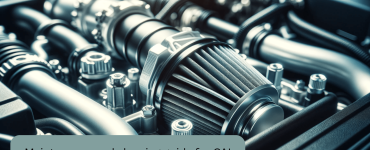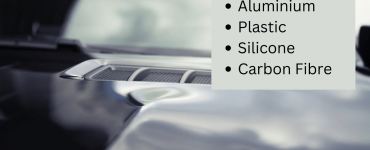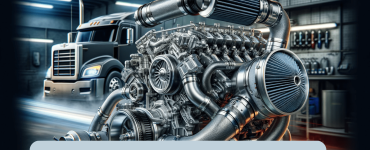Cost-Effectiveness Analysis: Maximizing Performance with Cold Air Intake Systems
When it comes to enhancing vehicle performance, the conversation often steers towards cost-effectiveness analysis. In the realm of automotive upgrades, one component that stands out for its efficiency and affordability is the cold air intake system. This system is a pivotal upgrade for car enthusiasts and everyday drivers alike, aiming to boost engine performance without breaking the bank.

Key Takeaways
- Affordability: Cold air intake systems are a cost-effective modification for most vehicles.
- Performance Enhancement: They improve horsepower and torque.
- Fuel Efficiency: Potential improvement in miles per gallon.
- Easy Installation: Often a straightforward DIY project.
- Maintenance: Regular cleaning and occasional replacement enhance longevity and performance.
Cost vs. Performance: Cost-effectiveness analysis
| Component or Action | Specific Price Range | Details |
|---|---|---|
| Cold Air Intake System Purchase | $100 – $400 | Varies by brand, model, and vehicle compatibility. |
| Professional Installation | $50 – $150 | Depends on the complexity and location. |
| DIY Installation Tools (if needed) | $20 – $50 | Basic toolkit, specific to vehicle requirements. |
| Reusable Air Filter Cleaning Kit | $10 – $30 | Includes cleaner and oil for oiled filters. |
| Disposable Air Filter Replacement | $15 – $60 per filter | Price varies based on brand and vehicle type. |
| Regular Inspection and Minor Maintenance | Minimal to None (DIY) | Time investment for self-checks and minor adjustments. |
| Professional Routine Maintenance Checkup | $50 – $100 per session | Optional and varies with service providers. |
| Potential Additional Parts (Clamps, Tubing) | $10 – $100 | Depending on the need for extra fittings or parts. |
When analyzing cost-effectiveness, it’s essential to weigh the benefits against the initial investment. Cold air intakes are relatively inexpensive compared to other performance upgrades like turbochargers, yet they offer a noticeable improvement in horsepower and torque. This is primarily due to their ability to draw in cooler, denser air, leading to more efficient combustion.
Real-Life Impact
A practical example is the case of a typical sedan, where installing a cold air intake can result in an appreciable increase in power output, often felt during highway overtaking or uphill driving.
Cold Air Intake: Understanding the Mechanics
Cold air intakes work by relocating the air filter outside of the engine compartment, allowing the engine to receive cooler air. Cooler air is denser, containing more oxygen, which is critical for combustion. This simple mechanism leads to more efficient fuel combustion, translating into better performance.
Comparing with Stock Intakes
Stock intakes often draw in warmer air from the engine bay, which is less efficient for combustion. Upgrading to a cold air intake can be a smart move for those looking to enhance their vehicle’s performance without extensive modifications. Learn more about this comparison at Cold Air Intakes vs. Stock Intakes: Enhancing Your Vehicle’s Performance.
Installation and Maintenance: DIY Friendly
One of the most appealing aspects of cold air intakes is their ease of installation. Many car enthusiasts opt to install them as a DIY project, which saves on labor costs. Maintenance is also straightforward, involving regular cleaning and occasional filter replacement.
Maintenance Tips
- Cleaning: Regular cleaning of the air filter ensures optimal performance.
- Replacement: Replace the filter as recommended by the manufacturer.
- Inspection: Periodically check for any leaks or damages.
For detailed maintenance guidelines, visit Cold Air Intake Benefits, Maintenance, and Cleaning for Peak Performance.
Fuel Efficiency: A Bonus
While the primary focus of cold air intakes is on performance enhancement, they can also contribute to improved fuel efficiency. By enabling a more efficient combustion process, the engine can deliver more power with less fuel, potentially leading to better mileage.
Conclusion
In conclusion, the cost-effectiveness of cold air intakes is evident. They offer a balance of performance enhancement, fuel efficiency, and affordability, making them an ideal choice for those looking to upgrade their vehicle without a hefty investment.
Q and A for CAI cost-effectiveness analysis
| Question | Answer |
|---|---|
| What are the main benefits of installing a cold air intake? | Increased horsepower, better fuel efficiency, and enhanced throttle response. |
| How often should the air filter in a cold air intake be cleaned? | For reusable filters, every 30,000 to 50,000 miles; disposable filters should be replaced as per manufacturer’s recommendation. |
| Can installing a cold air intake void my vehicle’s warranty? | It depends on the vehicle’s warranty terms. Some manufacturers may void the warranty if aftermarket parts cause damage. |
| Is it necessary to have a professional install a cold air intake? | Not necessarily. Many cold air intakes are designed for DIY installation, but professional installation is recommended if you’re not comfortable with the process. |
| Will a cold air intake improve my vehicle’s fuel economy? | Yes, it can improve fuel economy by making the engine run more efficiently, though actual savings vary. |
| Are there different types of cold air intakes for different engines? | Yes, cold air intakes are designed to fit specific engine types and models, so it’s important to choose the right one for your vehicle. |
| How does a cold air intake affect the sound of my car? | It often enhances the engine’s sound, making it more audible and aggressive, especially under acceleration. |
| Do I need to clean my cold air intake regularly? | Yes, regular cleaning and maintenance are crucial for optimal performance and longevity of the system. |
| Can a cold air intake system improve acceleration? | Yes, by providing more efficient airflow, it can improve throttle response and acceleration. |
| Is there a risk of water intake with cold air intakes? | If improperly installed or in very wet conditions, there’s a small risk of water ingestion, but most systems are designed to minimize this risk. |




